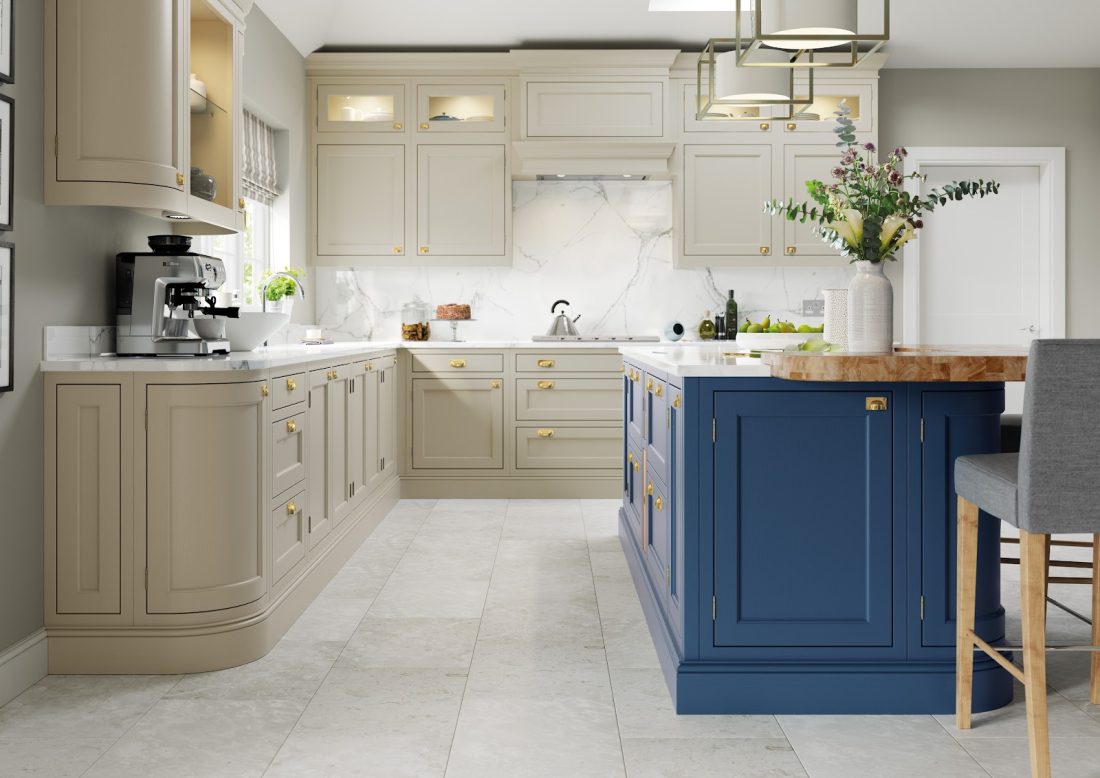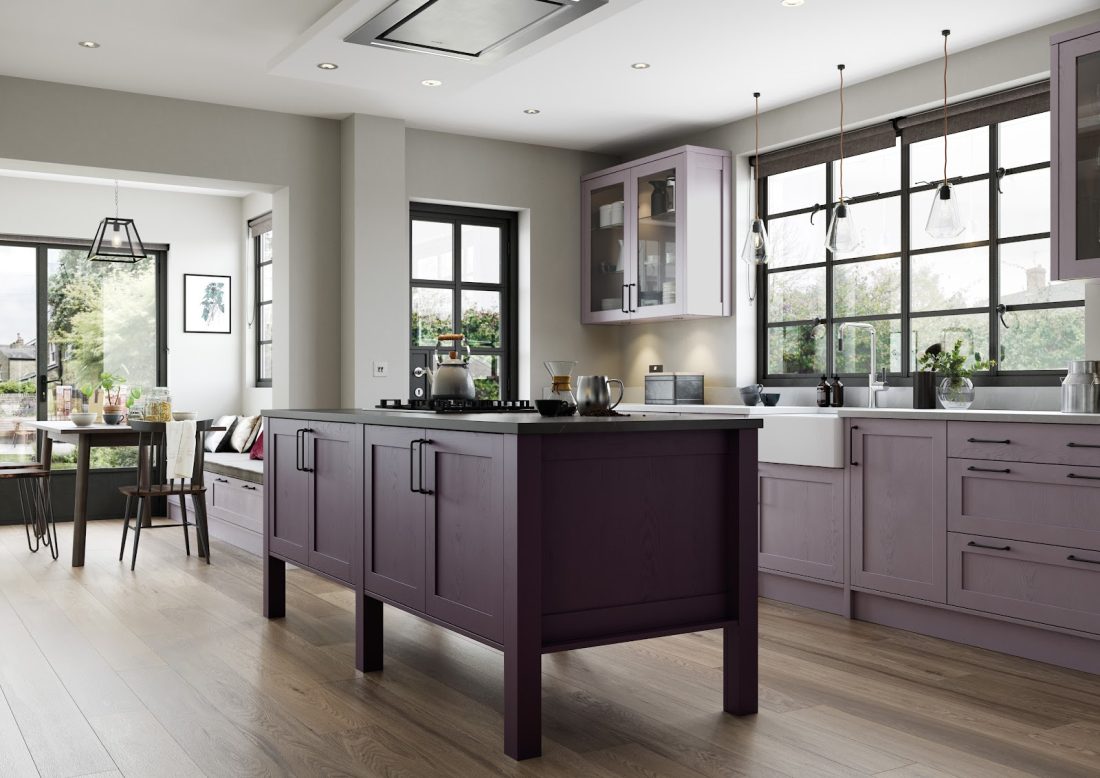They don’t call it the “heart of the home” for nothing. More than just a room where you do the cooking, the kitchen is the place where you start the day with a hot cup of coffee and unwind in the evening surrounded by your loved ones. It may not be the most used room in the house (compared to previous generations, at least), but it’s definitely a warm and welcoming space we hold close to our hearts. For this reason, redesigning a kitchen can be quite a complex project. When choosing a new kitchen style, you need to make sure that it’s practical and comfortable enough so you can move freely, whilst also being a welcoming space for having friends over for a cup of tea.

Whether you want your kitchen to look creative and whimsical, rustic, or contemporary, possibilities are endless. Even if you have a smaller space to work with, there are still ways you can play with lighting, colours, and strategic placement to make your dream design work. But how do you find that dream design, and most importantly, how do you strike the perfect balance between aesthetics and practicality? Here are eight stunning kitchen styles to inspire you, along with their pros and cons.
- The traditional kitchen
This style is all about classic looks that are adapted to the needs of the modern homeowner. Focusing on elegant and meticulous craftsmanship, traditional kitchens don’t follow the latest trends in interior design and instead focus on time-tested elements that will look just as great ten years from now as they do today.

Traditional kitchen units come in all shapes, colours, and sizes, but, most of the time, they are centred around massive, furniture-style cabinets with visible frames around the doors and drawers and impressive hardware such as antique bronze hinges and brass accents. Colours range from antique white (which adds a bit of period nostalgia) to neutral, earth-coloured shades like beige, brown, taupe, or light brown, while accents can be in deeper shades of navy, burgundy, and dark green. Stone countertops are consistent with the nature theme whilst giving the kitchen its timeless appeal. It is best if you find a supplier with a wide range of granite countertops in stock so you can view what your specific granite slabs will look like.
The biggest pro of traditional kitchens is that, with maintenance, they’ll maintain their appeal for years. However, if you’re the kind of person who always wants to follow the latest trends, you’ll find this style rather restricting.
- The matte kitchen
If you opted for a traditional style for a kitchen, matte finishes are the way to go. In addition to creating texture and giving your cabinets and countertops a sophisticated look, they also have practical benefits. Matte surfaces don’t reflect the light as much as glossy ones, which means that imperfections, dust, and fingerprints won’t be as visible. If you have children or you simply don’t want to spend a lot of time cleaning after yourself, you’ll love them. However, that doesn’t mean they’re easy to clean; when they eventually get dirty, matte surfaces tend to absorb stains, so they’ll need more than a simple wipe with a cloth. Also, matte surfaces don’t reflect light, so if you want to create the illusion of a bigger space, go for a high-gloss kitchen instead.
- The high gloss kitchen
High-gloss surfaces are one of the primary features of a modern kitchen. Thanks to their ability to reflect light, glossy surfaces make the room look bright and spacious, which makes them perfect for small kitchens. Glossy surfaces are indeed dust and fingerprint magnets, so you will need to clean them almost every day, but the good news is that they’re not porous. Heavy scrubbing won’t be necessary because dust and grime can easily be removed with a damp cloth.
- Solid wood kitchens
The ultimate choice in terms of durability and class, solid wood kitchens require a bigger investment, but they’re definitely worth it. Solid wood maintains its value over time, which is a good thing for when you want to sell, and when they start looking old, all you need to do is sand them and apply a new coat of varnish. On the downside, solid wood is notoriously sensitive to moisture. If you live in an area with high humidity, veneers are a must if you don’t want your precious cabinets to warp and lose their shape over time, but, even so, you might still see some cracking because kitchens are high-humidity rooms anyway. Another thing you need to know about solid wood kitchens is that they require maintenance to look their best.
- Painted kitchens
Whether you don’t like the organic look of solid wood kitchens or you simply don’t want to worry about maintenance, painted kitchens are a clever alternative. Made from painted MDF, they’re trendy and versatile because you can choose from a wide variety of shades and colour combinations. If you ever get bored of the colour, you can simply repaint them later. However, one disadvantage of painted kitchen cabinets is that they don’t last as much because the colour tends to chip with time.
- Handleless kitchens
Fans of minimalism love handleless kitchens because they save space whilst also offering a sleek, futuristic look. With this style, drawers and cabinets have no handles at all, which means that you’ll never have to worry about bumping into a piece of heavy brass ever again. They’re also much safer if you have kids. On the downside, this design isn’t very accessible, so if someone in your family has a health condition that affects their hands, such as arthritis, you’ll make their lives a bit complicated. Also, handleless cabinets will get dirtier easily, but you solve this problem by going with a glossy finish.
- Shaker kitchens
Shaker style kitchens have been around since the beginning of the 20th century, and they won’t be going away anytime soon. Of course, the design of shaker cabinets has changed a lot over the years, and you can also find modern variations of it. They remain a classy and timeless option that combines looks with practicality, and the fact that they’re easy to clean makes them perfect for busy families. However, shaker cabinets aren’t compatible with all kitchen layouts, and some home buyers looking for higher-end designs might not like them.


